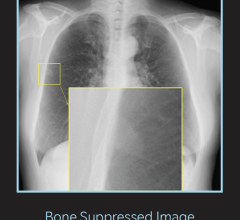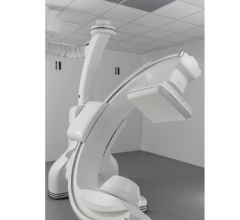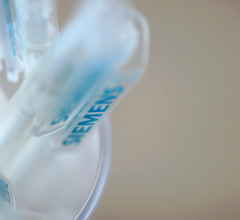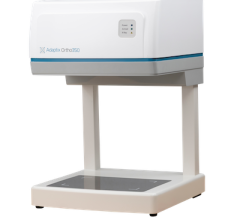
Lymphocytic Inflammation in a Lung from a Patient Who Died from Covid-19. The gross appearance of a lung from a patient who died from coronavirus disease 2019 (Covid-19) is shown in Panel A (the scale bar corresponds to 1 cm). The histopathological examination, shown in Panel B, revealed interstitial and perivascular predominantly lymphocytic pneumonia with multifocal endothelialitis (hematoxylin–eosin staining; the scale bar corresponds to 200 μm). Image courtesy of The New England Journal of Medicine
May 22, 2020 — In a new study in the New England Journal of Medicine (NEJM), senior author Steven J. Mentzer, M.D., thoracic surgeon at Brigham and Women's Hospital, and a team of international researchers examined seven lungs obtained during autopsy from patients who died of COVID-19. They compared this group to seven autopsied lungs obtained from patients who died of acute respiratory distress syndrome secondary to influenza A (H1N1) infection as well as to 10 age-matched uninfected control lungs.
Both COVID-19 and influenza are the same category of virus and both infect the respiratory tract. While the lungs shared some common features, there were distinctive features related to blood vessels seen in the lungs of patients who had died of COVID-19.
Researchers observed that COVID-19 damaged the endothelial cells (vascular lining cells), causing severe endothelial injury. Patients with COVID-19 showed widespread blood clotting as well as new vessel growth — the latter likely a result of the body's response to the virus. The team saw signs of a distinctive pattern of pulmonary vascular disease progression in some cases of COVID-19 compared to that of equally severe influenza virus infection.
Some of the key points are highlighted below:
- COVID-19 is a respiratory virus that causes a vascular disease.
- The damage to vascular cells helps explain the serious blot clotting observed in patients.
- A unique response, intussusceptive angiogenesis (IA), is the way the body compensates for the thrombosis and blood vessel damage.
- Damaged blood vessels may also underlie other problems seen, such as COVID toe, children with Kawasaki, stroke, and other seemingly unrelated problems seen with COVID-19.
- This study shows the need for more research on angiogenesis and the vascular effects of COVID-19.
For more information: www.
Related Coronavirus Content:
VIDEO: Imaging COVID-19 With Point-of-Care Ultrasound (POCUS)
The Cardiac Implications of Novel Coronavirus
CT Provides Best Diagnosis for Novel Coronavirus (COVID-19)
Radiology Lessons for Coronavirus From the SARS and MERS Epidemics
Deployment of Health IT in China’s Fight Against the COVID-19 Epidemic
Emerging Technologies Proving Value in Chinese Coronavirus Fight
Radiologists Describe Coronavirus CT Imaging Features
Coronavirus Update from the FDA
CT Imaging of the 2019 Novel Coronavirus (2019-nCoV) Pneumonia
CT Imaging Features of 2019 Novel Coronavirus (2019-nCoV)
Chest CT Findings of Patients Infected With Novel Coronavirus 2019-nCoV Pneumonia
Find more related clinical content Coronavirus (COVID-19)
ACC COVID-19 recommendations for the cardiovascular care team
VIDEO: What Cardiologists Need to Know about COVID-19 — Interview with Thomas Maddox, M.D.
The Cardiac Implications of Novel Coronavirus
ESC Council on Hypertension Says ACE-I and ARBs Do Not Increase COVID-19 Mortality


 December 05, 2025
December 05, 2025 









